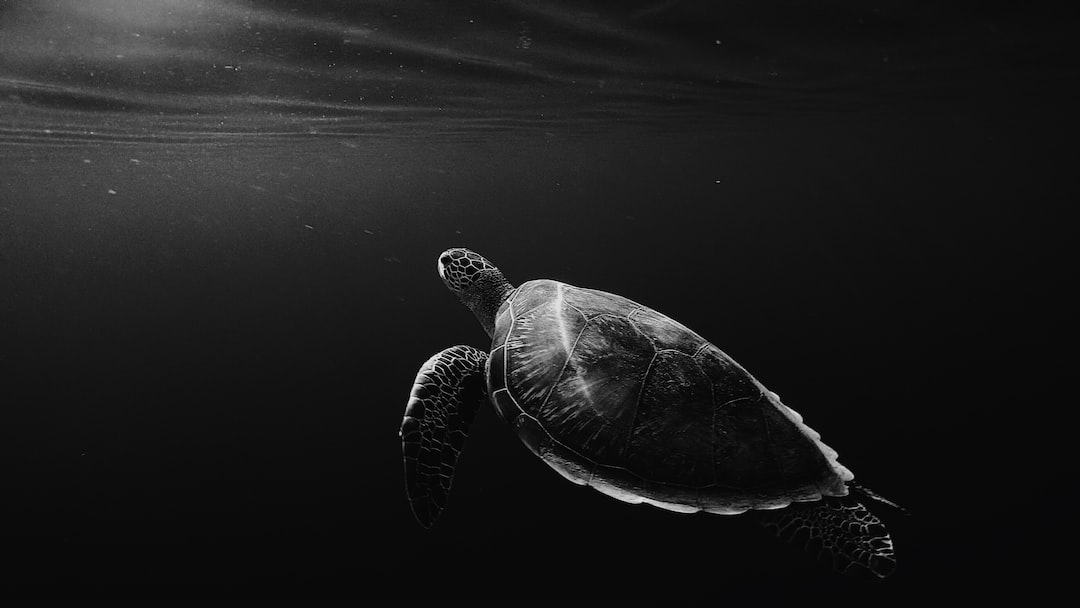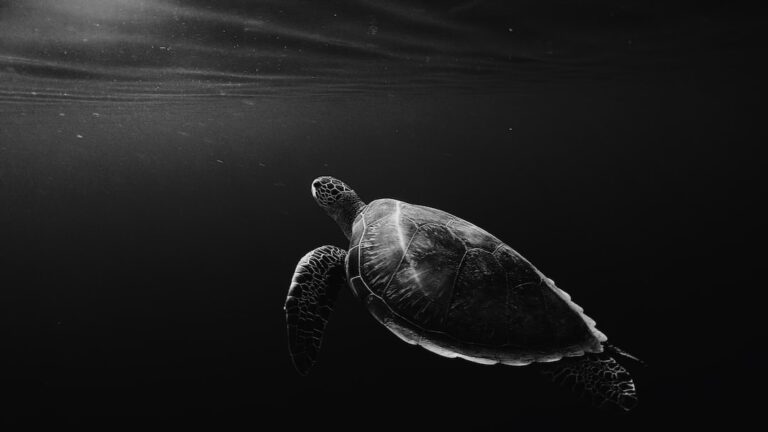Are Turtles Shy?
Turtles are fascinating creatures that have captured the attention of humans for centuries. With their unique appearance and slow, deliberate movements, turtles have become symbols of wisdom, longevity, and resilience. However, despite their popularity, there is still much to learn about these enigmatic creatures. One aspect of turtle behavior that has intrigued scientists and enthusiasts alike is their shyness. Understanding turtle behavior and shyness is crucial for their conservation and well-being.
Table of Contents
Understanding the Nature of Turtles: Are They Shy Creatures?
Turtles are reptiles that belong to the order Testudines. They are characterized by their bony shells, which provide them with protection from predators. Turtles have been around for millions of years and have adapted to a wide range of environments, from freshwater lakes and rivers to oceans and even deserts.
When it comes to behavior, turtles are known for their slow movements and cautious nature. They are generally solitary animals and prefer to spend most of their time alone. Turtles are also known for their ability to retract their heads and limbs into their shells when they feel threatened, which is often seen as a defensive behavior.
While turtles may exhibit behaviors that can be interpreted as shyness, it is important to note that shyness is a human concept that may not fully apply to these animals. Turtles are not social creatures like dogs or dolphins, so their behavior should be understood within the context of their natural instincts and survival strategies.
The Science Behind Turtle Behavior: Exploring Shyness in Turtles
Scientific research on turtle behavior has shed light on the factors that contribute to shyness in these animals. One study conducted by Dr. James Burghardt at the University of Tennessee found that turtles exhibit a range of behaviors that can be interpreted as shyness, including retreating into their shells when approached by humans or other potential threats.
Factors that contribute to shyness in turtles include their natural instincts for self-preservation and their reliance on camouflage for protection. Turtles have evolved to be cautious and wary of potential dangers, as their slow movements make them vulnerable to predators. Shyness is therefore an adaptive behavior that helps turtles survive in their environments.
Shyness can also be influenced by environmental factors such as habitat loss and disturbance. When turtles lose their natural habitats or are constantly exposed to human activity, they may become more shy and reclusive as a means of protecting themselves.
Debunking Myths: Common Misconceptions About Turtles and Shyness
There are several common myths about turtles and shyness that need to be debunked. One myth is that turtles are naturally aggressive or unfriendly creatures. In reality, turtles are generally peaceful animals that prefer to avoid confrontation whenever possible. Their shyness should not be mistaken for aggression or hostility.
Another myth is that turtles are shy because they are afraid of humans. While it is true that turtles may retreat into their shells when approached by humans, this behavior is not necessarily a sign of fear. Turtles have evolved to be cautious and wary of potential threats, and retreating into their shells is a natural defense mechanism.
It is also important to dispel the myth that all turtles are shy. While many species of turtles exhibit shy behaviors, there are also species that are more outgoing and less prone to shyness. Each species of turtle has its own unique behaviors and personality traits, so it is important to approach them with an open mind and without preconceived notions.
How Turtles Interact with Their Environment: The Role of Shyness
Turtles interact with their environment in a variety of ways, and shyness plays a role in these interactions. Turtles rely on their surroundings for food, shelter, and reproduction, so understanding how they interact with their environment is crucial for their survival.
Shyness in turtles can affect their feeding habits. Shy turtles may be more hesitant to venture out of their hiding places to search for food, which can lead to malnutrition and other health issues. Shyness can also impact a turtle’s ability to find suitable mates and reproduce, as shy turtles may have difficulty finding and attracting potential partners.
In addition, shyness can affect a turtle’s ability to find suitable shelter and nesting sites. Shy turtles may be more reluctant to explore new areas or venture into unfamiliar territory, which can limit their access to resources and increase their vulnerability to predators.
The Importance of Socialization: How Turtles Overcome Shyness
Socialization plays a crucial role in helping turtles overcome shyness and adapt to their environment. While turtles are generally solitary animals, they still engage in social behaviors with other members of their species.
Socialization allows turtles to learn from each other and develop important skills for survival. By observing the behaviors of other turtles, young turtles can learn how to find food, avoid predators, and navigate their surroundings. Socialization also helps turtles develop communication skills, which are important for mating and establishing territories.
For captive turtles, socialization with humans can also help them overcome shyness. By gradually introducing turtles to human interaction in a safe and controlled environment, they can become more comfortable with human presence and less likely to retreat into their shells when approached.
The Impact of Human Interaction on Turtle Shyness
Human interaction can have both positive and negative effects on turtle behavior and shyness. While some turtles may become more comfortable with human presence through socialization, others may become more shy and reclusive as a result of negative experiences with humans.
Negative interactions with humans can include habitat destruction, pollution, and direct disturbance by humans. These activities can disrupt turtle habitats, destroy nesting sites, and cause stress and anxiety in turtles. As a result, turtles may become more shy and reclusive as a means of protecting themselves from potential harm.
It is important for humans to minimize their impact on turtle behavior and shyness by respecting their natural habitats and observing them from a distance. By giving turtles the space they need to thrive, humans can help preserve their natural behaviors and ensure their long-term survival.
The Psychology of Turtles: How Their Personalities Affect Shyness
While it may be tempting to think of turtles as all being the same, they actually have individual personalities that can influence their shyness. Just like humans, turtles have unique temperaments and preferences that shape their behavior.
Some turtles may be naturally more shy and cautious, while others may be more outgoing and curious. These personality traits can affect how turtles interact with their environment and respond to potential threats. Understanding the personalities of individual turtles is crucial for their well-being and can help inform conservation efforts.
The Benefits of Shyness in Turtles: How It Helps Them Survive
While shyness may seem like a disadvantage, it actually provides several benefits for turtles. Shyness helps turtles avoid predators by making them less visible and less likely to attract attention. By retreating into their shells or hiding in vegetation, shy turtles can increase their chances of survival in the face of potential threats.
Shyness also helps turtles conserve energy. Turtles are ectothermic animals, which means they rely on external sources of heat to regulate their body temperature. By being shy and avoiding unnecessary movement, turtles can conserve energy and maintain their body temperature more efficiently.
In addition, shyness can help turtles avoid competition for resources. By being cautious and selective about when and where they forage for food or find mates, shy turtles can reduce the risk of encountering other individuals and increase their chances of securing the resources they need to survive.
The Relationship Between Turtles and their Habitat: The Effect on Shyness
Turtle habitat plays a crucial role in shaping their behavior and shyness. Turtles have specific habitat requirements, including access to water, suitable nesting sites, and a diverse range of food sources. When these habitats are disrupted or destroyed, turtles may become more shy and reclusive as a means of protecting themselves.
Habitat loss is a major threat to turtle populations worldwide. Deforestation, urbanization, and pollution are just a few of the factors that contribute to habitat loss for turtles. When turtles lose their natural habitats, they may be forced to seek refuge in unfamiliar or suboptimal environments, which can increase their shyness and decrease their chances of survival.
Protecting turtle habitats is therefore crucial for preserving their natural behaviors and ensuring their long-term survival. This can be done through conservation efforts such as habitat restoration, protected areas, and public education about the importance of turtles and their habitats.
Tips for Interacting with Shy Turtles: How to Approach Them Safely
If you encounter a shy turtle in the wild, it is important to approach it with caution and respect. Here are some tips for interacting with shy turtles:
1. Observe from a distance: Give the turtle plenty of space and observe it from a distance using binoculars or a camera with a zoom lens. This allows you to appreciate its beauty without causing unnecessary stress or disturbance.
2. Avoid sudden movements: Turtles are sensitive to vibrations and sudden movements, so try to move slowly and quietly when approaching them. Sudden movements can startle turtles and cause them to retreat into their shells.
3. Do not touch or handle the turtle: It is important to remember that turtles are wild animals and should not be touched or handled unless absolutely necessary. Touching or handling turtles can cause stress and potentially harm them.
4. Do not feed the turtle: Feeding wild turtles can disrupt their natural feeding habits and make them dependent on human food sources. It is best to let turtles find their own food in their natural habitats.
5. Leave no trace: When observing turtles in the wild, be sure to leave no trace of your presence. This means not leaving behind any trash or disturbing the turtle’s habitat in any way.
Understanding turtle behavior and shyness is crucial for their conservation and well-being. Turtles are fascinating creatures that have adapted to a wide range of environments, and their shyness is a natural behavior that helps them survive in the face of potential threats.
By dispelling common myths about turtles and shyness, we can gain a better understanding of these animals and work towards protecting their habitats. Through socialization, humans can help turtles overcome shyness and adapt to their environment.
It is important for humans to minimize their impact on turtle behavior and shyness by respecting their natural habitats and observing them from a distance. By giving turtles the space they need to thrive, humans can help preserve their natural behaviors and ensure their long-term survival.
In conclusion, understanding turtle behavior and shyness is not only important for the well-being of these fascinating creatures, but also for the health of our ecosystems as a whole. By taking steps to protect turtles and their habitats, we can ensure that future generations will be able to appreciate these incredible animals for years to come.
If you’re curious about the behavior of turtles, you may also be interested in learning about their territorial nature. In a fascinating article titled “Are Turtles Territorial?” on Reptile Friend, you can explore the intriguing world of turtle behavior and discover how these creatures establish and defend their territories. Understanding their territorial instincts can provide valuable insights into their social dynamics and interactions with other turtles. So, if you want to delve deeper into the fascinating world of turtles, this article is definitely worth a read!







